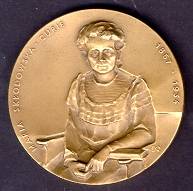 |
IFIA
ACTIVITIES |
Published
by IFIA Last Update October 3, 2003 |
FROM A NEWSLETTER TO THIS WEB PAGE Eight (8) issues of a 4-page biannual newsletter, IFIA-WIN, were published from January-June 1995 to July-December 1999. Since early 2000, it was decided to cease the publication of the newsletter and to develop, instead, a substantial Web presence on Women, which now includes inter alia the relevant basic information previously published. The role of this Web page remains, above all, that of a catalyst in support of IFIA-WIN main objective.
It had taken us women inventors several months to coordinate this first IFIA Illustrative Women Inventors Exhibit for the UN Fourth World Conference on Women in Beijing. Our exhibit was in Huairu, near Beijing, in the framework of the NGO Forum '95 on women (August 30 to September 8, 1995). Our booth was in the OFAN (Once and Future Action Network) Pavilion. OFAN was created for the Beijing events, to tackle women's issues in the field of science and technology. The IFIA booth had posters of women inventors and their inventions representing 11 countries: Argentina, Canada, Cuba, Denmark, Finland, Iceland, Japan, Malaysia, Norway, the Philippines and Sweden. We arrived on August 29, a young Finnish woman, a volunteer and myself, to put up the exhibition. Later, women inventors - members of the IFIA family - discovered their way to our booth in quick succession: Dr Choo Yuen May, Malaysia; Ms Carlita Rex-Doran, Philippines; Dr Gladys Hernandez, Cuba; and Ms Synnove Engeset, Norway. After corresponding with them for months and not knowing if they could make it to China, it was exciting meeting them there. It is impossible to estimate how many women visited our booth. What is certain is that it attracted attention by introducing a new role model: woman inventor. Four journalists said they were going to write about women inventors in their countries. Our scientist inventors, Dr Gladys Hernandez and Dr Choo Yuen May, were interviewed for a film. Myself, I interviewed hundreds of women, asking them if they knew of any women inventors in their own country. Only very few said yes, which makes the informative value of our IFIA exhibit even more important.
IFIA-OSEC COLLECTIVE BOOTH IN
GENEVA Thanks to the Swiss Office for Trade Promotion (OSEC), IFIA was able to set up a collective booth for women inventors from developing countries at the 1997 Geneva International Exhibition of Inventions. OSEC:
IFIA:
The first three prizes were awarded as follows:
The inventions were judged equally with every other invention presented at the Geneva Fair. Thus, they were eligible and obtained, other prizes, distinctions, medals, etc., awarded during the Fair, including the IFIA Cup and the WIPO Award (Gold Medal, plus US$ 2,000).
In the IFIA-OSEC booth from left to right: Ms Gaby Matsumoto (Peru): incubator for babies in risk; two Geneva Exhibition hostesses; Ms Mirta Mabel Fasci (Argentina, see above second prize); Ms Neelakanthi E. Gunawardena (Sri Lanka, see above first prize); Ms Erlinda Sanqui (Philippines): instant pinakbet flavoring composition; and Ms Carlita Doran (Philippines, see above third prize).
ONLINE COMMERCIALIZATION OF INVENTIONS IFIA launched on November 15, 1999 a virtual showcase of inventions and new products, now called <1000inventions>. For an analysis of the women inventions published among the first 500 inventions posted on 1000inventions, go to our Women Inventors webpage Statistics and click on Inventions on IFIA <1000inventions>. The search references of each of the 88 inventions by women (as of September 23, 2003) are listed. You can visit IFIA 1000inventions website at:
IFIA published the following two books: Women Inventors Organizations:
by Farag Moussa. Published in English, Chinese, 104 pages with illustrations, 44
illustrations. US $15.
Note |
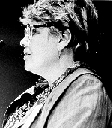

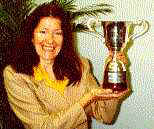
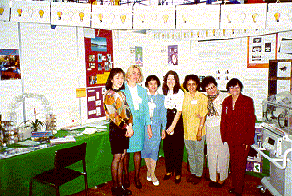
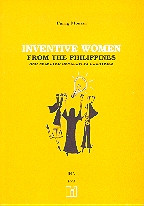 Inventive
Women from the Philippines
Inventive
Women from the Philippines 
